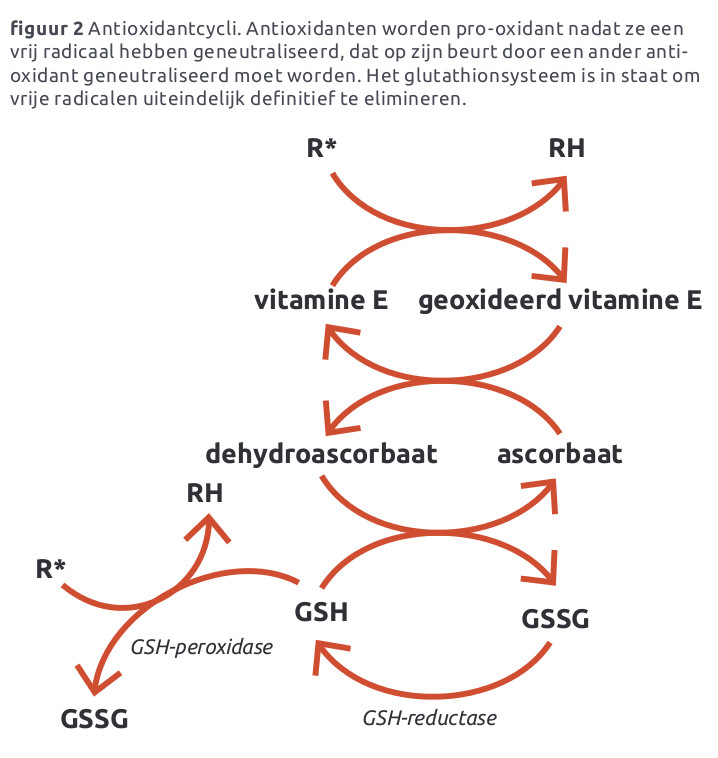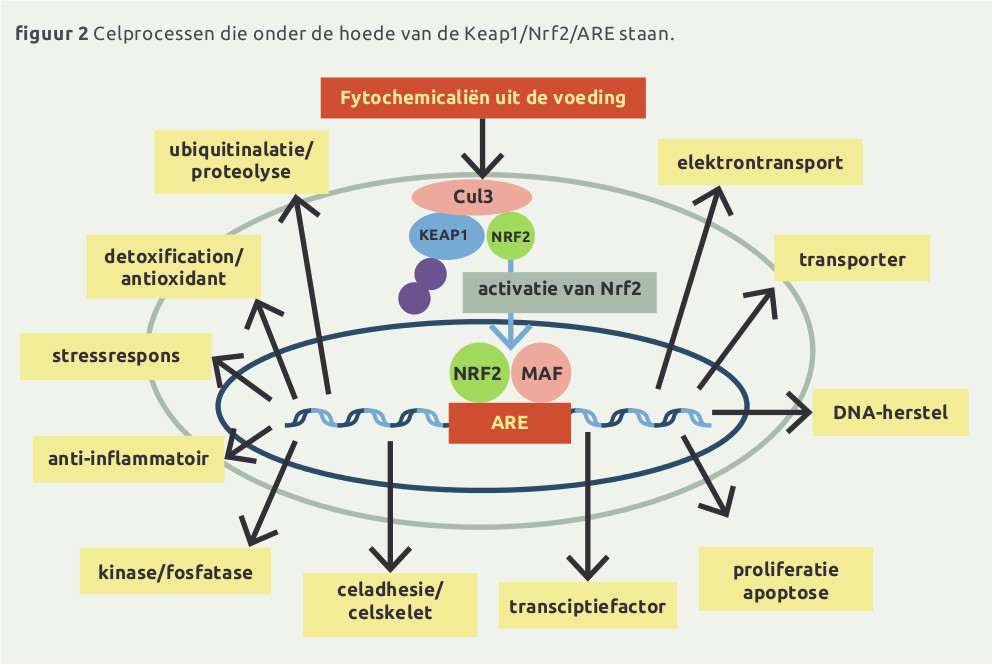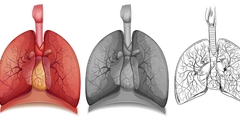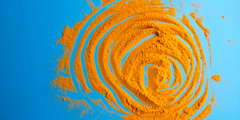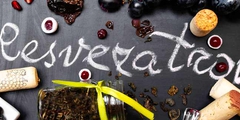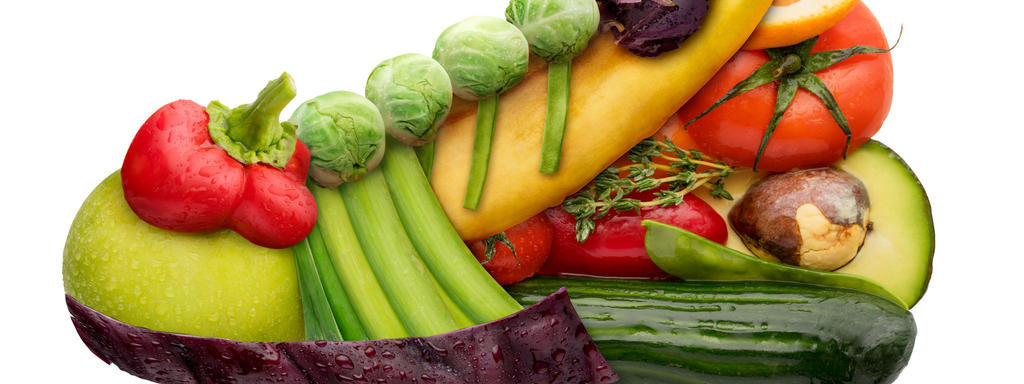
Hormese is voor velen een wat schimmig en ongrijpbaar begrip, zelfs de wetenschap begint er slechts recent inzicht in te verwerven. Hormese duidt op de capaciteit van het lichaam om zich aan te passen aan stresssituaties, én er sterker van te worden door meer weerstand op te bouwen. Een goed voorbeeld is beweging (geen topsport!): deze veroorzaakt een lichte vorm van stress, waarop het lichaam reageert met specifieke mechanismen waar het telkens sterker van wordt. Zo zijn er meer voorbeelden, maar vooral planten solliciteren onze hormetische capaciteit: groenten en fruit, naast kruiden, noten, zaden ...
Beste bezoeker, u heeft geen toegang.
Enkel (web)abonnees hebben toegang tot tijdschriftartikelen. Het webabonnement is nog in de maak.
U kunt zich wel alvast (gratis) registreren en tal van andere webartikelen raadplegen!
Auteur
Verschenen in
Referenties
Mattson MP. Hormesis defined. Ageing Res Rev 2008; 7(1):1-7.
van der Woude H, Alink GM, Rietjens IM. The definition of hormesis and its implications for in vitro to in vivo extrapolation and risk assessment. Crit Rev Toxicol. 2005 Jul;35(6):603-7.
Ji LL et al.Exercise and hormesis:activation of cellular antioxidant signaling pathway. Ann NY Acad Sci 2006; 1076:425-35.
Mattson MP. Dietary factors, Hormesis and Health. Ageing Res Rev 2008; 7(1):43-48.
Son TG, Camandola S, Mattson MP. Hormetic dietary phytochemicals. Neuromolecular Med. 2008;10(4):236-46.
Cheynier V, Comte G, Davies KM, Lattanzio V, Martens S. Plant phenolics: Recent advances on their biosynthesis, genetics, and ecophysiology. Plant Physiol Biochem. 2013 May 28. pii: S0981-9428(13)00174-5
Calabrese V, Cornelius C, Trovato A, Cavallaro M, Mancuso C, Di Rienzo L, Condorelli D, De Lorenzo A, Calabrese EJ. The hormetic role of dietary antioxidants in free radical-related diseases. Curr Pharm Des. 2010;16(7):877-83
Gupta C, Prakash D. Phytonutrients as therapeutic agents. J Complement Integr Med. 2014 Jul 22. 2013-0021.
Mattson MP, Cheng A. Neurohormetic phytochemicals: Low-dose toxins that induce adaptive neuronal stress responses. Trends Neurosci. 2006 Nov;29(11):632-9.
Surh YJ. Xenohormesis mechanisms underlying chemopreventive effects of some dietary phytochemicals. Ann N Y Acad Sci. 2011 Jul;1229:1-6.
Mattson MP. Hormesis and disease resistance: activation of cellular stress response pathways. Hum Exp Toxicol. 2008 Feb;27(2):155-62.
Pincemail J. Stress oxydant et Antioxydants. Revue critique des processus d' action des antioxydants. www.testezesitions.be ISBN 987-2-87461-108-7
Calabrese V, Cornelius C, Trovato A, Cavallaro M, Mancuso C, Di Rienzo L, Condorelli D, De Lorenzo A, Calabrese EJ. The hormetic role of dietary antioxidants in free radical-related diseases. Curr Pharm Des. 2010;16(7):877-83
Surh YJ, Kundu JK, Na HK. Nrf2 as a master redox switch in turning on the cellular signaling involved in the induction of cytoprotective genes by some chemopreventive phytochemicals. Planta Med. 2008 Oct;74(13):1526-39.
Zhang YC, Gan FF, Shelar SB, Chew EH. Antioxidant and Nrf2 inducing activities of luteolin, a flavonoid constituent in Ixeris sonchifolia Hance, provide neuroprotective effects against ischemia-induced cellular injury. Food Chem Toxicol. 2013 Jun 13. pii: S0278-6915(13)00364-5.
Forman JH, Ursini F. Para-hormesis: An innovative mechanism for the health protectionbrought by antioxidants in wine. Nutr&Aging 2014; 2:117-124.
Sies H et al. Nutritional, dietary and postprandial stress. J Nutr 2005; 135:969-72.
Speciale A, Chirafisi J, Saija A, Cimino F. Nutritional antioxidants and adaptive cell responses: an update. Curr Mol Med. 2011 Dec;11(9):770-89.
Surh YJ, Kundu JK, Na HK. Nrf2 as a master redox switch in turning on the cellular signaling involved in the induction of cytoprotective genes by some chemopreventive phytochemicals. Planta Med. 2008 Oct;74(13):1526-39.
Satoh T et al. Nrf2/ARE-mediated antioxidant actions of pro-electrophilic drugs. Free Radic Biol Med 2013; 65C:645-57.
Baird L et al. The cytoprotective role of the Nrf2-Keap1 pathway. Arch Toxicol 2011; 85:241-72.
Itoh K et al. Molecular mechanism activating Nrf2-Keap1 pathway in regulation of adaptive response to electrophiles. Free Radic Biol Med 2004; 36:1208-13.
BirringerM. Hormetics: dietary triggers of an adaptive stress response. Pharm Res 2011;28:2680-94.
Forman et al. How do nutritional antioxidants really work: nucleophylic tone and para - hormesis versus free radical scavenging in vivo. Free rad Biol & med 2013; S0891-5849(13)00273-6.
Brannon BL, Tollefsbol TO. Polyphenols and ageing. Curr Aging Sci 2010; 3:34-42.
Scapagnini G et al. Modulation of the Keap1/Nrf2/ARE-pathway by food polyphenols: a nutritional strategy for cognition and degenerative disordrs. Mol Neurobiol 2011; 44:192-201.
Xie Y, Chen X. Structures Required of Polyphenols for Inhibiting Advanced Glycation end Products Formation. Curr Drug Metab. 2013 May 1;14(4):414-31.
Lee HH, Park SA, Almazari I, Kim EH, Na HK, Surh YJ. Piceatannol induces heme oxygenase-1 expression in human mammary epithelial cells through activation of ARE-driven Nrf2 signaling. Arch Biochem Biophys. 2010 Sep 1;501(1):142-50.
Robb EL, Stuart JA. The stilbenes resveratrol, pterostilbene and piceid affect growth and stress resistance in mammalian cells via a mechanism requiring estrogen receptor beta and the induction of Mn-superoxide dismutase. Phytochemistry. 2013 S0031-9422(13)00454-8.
Robb EL, Stuart JA. Resveratrol interacts with estrogen receptor-β to inhibit cell replicative growth and enhance stress resistance by upregulating mitochondrial superoxide dismutase. Free Radic Biol Med. 2011 Apr 1;50(7):821-31.
Lee HH, Park SA, Almazari I, Kim EH, Na HK, Surh YJ. Piceatannol induces heme oxygenase-1 expression in human mammary epithelial cells through activation of ARE-driven Nrf2 signaling. Arch Biochem Biophys. 2010 Sep 1;501(1):142-50.
Mattson MP, Son TG, Camandola S. Viewpoint: mechanisms of action and therapeutic potential of neurohormetic phytochemicals. Dose-Response 2007; 5:174-186.
Kendig et al. Defining hormesis: evaluation of a complex concentration response phenomenon. Int J Toxicol 2010; 29:235-46.
Kelsey NA, Wilkins HM, Linseman DA. Nutraceutical antioxidants as novel neuroprotective agents. Molecules. 2010 Nov 3;15(11):7792-814.
Jazwa A, Cuadrado A. Targeting heme oxygenase-1 for neuroprotection and neuroinflammation in neurodegenerative diseases. Curr Drug Targets. 2010 Dec;11(12):1517-31.
Andreadi CK, Howells LM, Atherfold PA, Manson MM. Involvement of Nrf2, p38, B-Raf, and nuclear factor-kappaB, but not phosphatidylinositol 3-kinase, in induction of hemeoxygenase-1 by dietary polyphenols. Mol Pharmacol. 2006 Mar;69(3):1033-40.
Levites, Y, Amit, T, Youdim, MB, Mandel, S. Involvement of protein kinase C activation and cell survival/ cell cycle genes in green tea polyphenol (-)-epigallocatechin 3-gallate neuroprotective action. J. Biol. Chem. 2002, 277, 30574-30580.
Han, YS, Zheng, WH, Bastianetto, S, Chabot, JG, Quirion, R. Neuroprotective effects of resveratrol against beta-amyloid-induced neurotoxicity in rat hippocampal neurons: involvement of protein kinase C. Br. J. Pharmacol. 2004, 141, 997-1005.
Levites, Y.; Amit, T.; Mandel, S.; Youdim, M.B. Neuroprotection and neurorescue against Abeta toxicity and PKC-dependent release of nonamyloidogenic soluble precursor protein by green tea polyphenol (-)-epigallocatechin-3-gallate. FASEB J. 2003, 17, 952-954.
Reznichenko, L.; Amit, T.; Youdim, M.B.; Mandel, S. Green tea polyphenol (-)-epigallocatechin-3-gallate induces neurorescue of long-term serum-deprived PC12 cells and promotes neurite outgrowth. J. Neurochem. 2005, 93, 1157-1167.
Kalfon, L.; Youdim, M.B.; Mandel, S.A. Green tea polyphenol (-)-epigallocatechin-3-gallate promotes the rapid protein kinase C- and proteasome-mediated degradation of Bad: implications for neuroprotection. J. Neurochem. 2007, 100, 992-1002.
Choi, D.S.; Wang, D.; Yu, G.Q.; Zhu, G.; Kharazia, V.N.; Paredes, J.P.; Chang, W.S.; Deitchman, J.K.; Mucke, L.; Messing, R.O. PKCepsilon increases endothelin converting enzyme activity and reduces amyloid plaque pathology in transgenic mice. Proc. Natl. Acad. Sci. USA 2006, 103, 8215-8220.
Spencer, JP. Flavonoids: modulators of brain function? Br. J. Nutr. 2008, 99 E Suppl 1, ES60-ES77.
Fukui, M, Choi, HJ, Zhu, BT. Mechanism for the protective effect of resveratrol against oxidative stress-induced neuronal death. Free Radic. Biol. Med. 2010, 49, 800-813.
Peng, PH et al. Effects of epigallocatechin-3-gallate on rat retinal ganglion cells after optic nerve axotomy. Exp. Eye Res. 2010, 90, 528-534.
Ciani, E, Guidi, S, Bartesaghi, R, Contestabile A. Nitric oxide regulates cGMP-dependent cAMP-responsive element binding protein phosphorylation and Bcl-2 expression in cerebellar neurons: implication for a survival role of nitric oxide. J. Neurochem. 2002, 82, 1282-1289.
Barneda-Zahonero B et al. Bone morphogenetic protein-6 promotes cerebellar granule neurons survival by activation of the MEK/ERK/CREB pathway. Mol. Biol. Cell 2009, 20, 5051-5063.
Li, Q et al. Long-term green tea catechin administration prevents spatial learning and memory impairment in senescenceaccelerated mouse prone-8 mice by decreasing Abeta1-42 oligomers and upregulating synaptic plasticity-related proteins in the hippocampus. Neuroscience 2009, 163, 741-749.
Ringman, JM et al. A potential role of the curry spice curcumin in Alzheimer's disease. Curr. Alzheimer. Res. 2005, 2, 131-136.
Scapagnini G, Vasto S, Abraham NG, Caruso C, Zella D, Fabio G. Modulation of Nrf2/ARE pathway by food polyphenols: a nutritional neuroprotective strategy for cognitive and neurodegenerative disorders. Mol Neurobiol. 2011 Oct;44(2):192-201.
Mattson MP, Cheng A. Neurohormetic phytochemicals: Low-dose toxins that induce adaptive neuronal stress responses. Trends Neurosci. 2006 Nov;29(11):632-9.
Calabrese V et al. Cellular stress response: a novel target for chemoprevention and nutritional neuroprotection in aging, neurodegenerative disorders an longevity. Neurochem Res 2008; 33:2444-71.
Surth YJ. Xenohormesis mechanisms underlying chemopreventive effects of some dietary fytochemicals. Ann NY acad Sc 2011;1229:1-6.
Surh YJ. Xenohormesis mechanisms underlying chemopreventive effects of some dietary phytochemicals. Ann N Y Acad Sci. 2011 Jul;1229:1-6.
Hayes JD, McMahon M, Chowdhry S, Dinkova-Kostova AT. Cancer chemoprevention mechanisms mediated through the Keap1-Nrf2 pathway. Antioxid Redox Signal. 2010 Dec 1;13(11):1713-48.
Katiyar SK, Athar M. Grape Seeds: Ripe for Cancer Chemoprevention. Cancer Prev Res (Phila). 2013 Jun 14. [Epub ahead of print]
Lee JH et al. Dietary phytochemicals and cancer prevention: Nrf2 signaling, epigenetics, and cell death mechanisms in blocking cancer initiation and progression. Pharmacol Ther 2013; 137(2):153-171.
Su Z-Y et al. A perspective on Dietary Phytochemicals and Cancer Chemoprevention: Oxidative Stress, Nrf2, and Epigenomics. Top Curr Chem 2013; 329:133-162.
Rui Hai Liu. Potential Synergy of Phytochemicals in Cancer Prevention: Mechanism of Action. J. Nutr. 134:3479S-3485S, December 2004
Vargas AJ, Burd R. Hormesis and synergy: pathways and mechanisms of quercetin in cancer prevention and management. Nutr Rev. 2010 Jul;68(7):418-28.
Liu RH. Potential synergy of Phytochemicals in Cancer Prevention: Mechanism of action. J Nutr 2004; 3479S-3485S.
Son TG, Camandola S, MP. Hormetic Dietary Phytochemicals. Neuromolecular Med. 2008; 10(4): 236–246.
Mattson MP. Hormesis and disease resistance: activation of cellular stress response pathways. Hum Exp Toxicol. 2008 Feb;27(2):155-62.
Rattan SI. Hormesis in aging. Ageing Res Rev. 2008 Jan;7(1):63-78.
Menendez JA et al. Xenohormetic and anti-aging activity of secoiridoid polyphenols present in extra virgin olive oil. Cell Cycle 2013; 12(4)55-78.
Pietsch K, Saul N, Chakrabarti S, Stürzenbaum SR, Menzel R, Steinberg CE. Hormetins, antioxidants and prooxidants: defining quercetin-, caffeic acid- and rosmarinic acid-mediated life extension in C. elegans. Biogerontology. 2011; 12(4):329-47.

